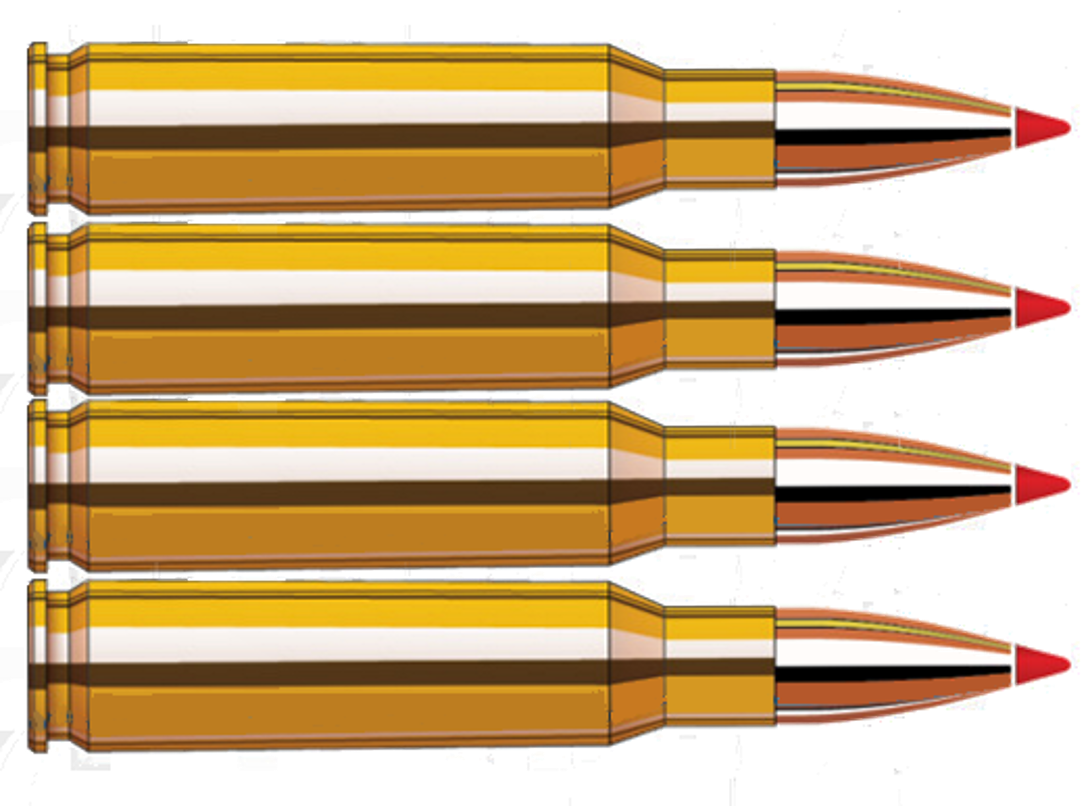Did you know: 9 out of 10 dentists recommend a weekly dose of The Merge.
|
The Macro-problem with Microchips |
Microchips are everywhere, but you probably haven’t given them much thought beyond the current global chip shortage.
It’s time to start paying attention though—because the Pentagon (finally) is.
What
Microchips are small things that contain smaller things that combine to form an integrated circuit, one of the most important inventions of all time.
This integrated circuit has a few pieces with specific jobs you don’t care about, but those tiny (micro?) pieces are collectively used to perform a specific task.
So What
Unlike that Cold War-era mag light that could withstand a direct nuclear strike, the mil-spec of computer chips is a much different ball game. In fact, most of the military’s computer chips are just like the ones in your personal electronics.
Back in the 1990s, to ensure the security of their chips the Pentagon used a policy called Trusted Foundry. The idea was to ensure the supply chain for military chips—from suppliers to production facilities—was verified to be secure.
Fast forward 30 years when everything has a microchip, and that’s a ton of work. Questioning the logic in the words of Dominic Toretto, “You're gonna go around and check everybody's sh*t out?” #HectorHasSpoonEngines |
 |
The proliferation of microelectronics has increased since then, and today most chips in DoD applications are designed by US chipmakers but fabricated in overseas foundries. Trusted Foundry couldn’t keep up, and has since limited its focus to intelligence and nuclear systems—a very small percentage of chips the military uses.
But even if you could check everything, some vulnerabilities will always slip through.
What Now
The Pentagon is asking for $2.3 billion this year to accelerate micro-electronics tech. Three chip programs to keep an eye on: - RAMP: Demonstrate secure enhanced chip designs utilizing commercial fabrication processes for DoD programs
- SHIP: Demonstrate unique and secure design approaches to develop secure, assessable, cost-effective integrated chip designs
- RAMP-Commercial: Incentive US chipmakers to build onshore foundry capabilities to support DoD-specific designs
Intel is a company involved in several DoD chip development programs, including the ones above. This is partly the reason they are spending $20 billion to build two new chip plants in Arizona.
If you think that’s serious money, you better sit down for this. Congress has set aside $52 billion (with a B) for domestic research and manufacturing of chips as part of the United States Innovation and Competition Act.
Way Forward
Chances are, you’ve already experienced some parts of zero-trust architecture in your daily lives already with multifactor authentication. You know, that annoying thing that happens when you log in to an account and it occasionally requires you to verify through a text code or authenticator app.
In the words of the DoD’s Senior Information Security Officer (SISO) Dave Mckeown: “You don’t just buy zero trust, it’s not a tool or a technology, it really is a new strategy. We have got to run a new defense, and zero trust is going to be it.”
DYK?: Thank a calculator company in Dallas for inventing the microchip back in 1959. A few years later, the military contracted Texas Instruments to incorporate their microchip into a new type of weapon—a low-cost laser-guided bomb (LGB). These became known as Paveway LGBs and were used during the Vietnam War. In the early 1970s, Texas Instruments improved the design, tapped Raytheon for production, and resulted in the venerable Paveway II LGB that remains in use to this day. Raytheon acquired Texas Instruments defense operations in the late 1990s, and with it, the Paveway design.
or |
In That Number
$1 trillion
The US military assesses the estimated value of mineral deposits in Afghanistan to be worth $1 trillion. This includes several rare earth minerals, and potentially one of the largest lithium reserves in the world—the key element that powers the exploding market of electronic vehicles. |
Trivia: The C-17 has been all over the headlines the past 10 days. The air mobility workhorse has garnered the affectionate nickname Moose. But why?
A) It’s big and strong, like a moose
B) Its high wings and large winglets look like a moose
C) It sounds like a horny moose when refueling |
 |
The House has draft legislation to help bridge the Valley of Death. The bill would increase the Navy’s SBIR/STTR Transition Education Program funding by 140%, which means that Congress believes they are onto something (dear Air Force, go talk to the Navy). The bill also directs that the Strategic Capabilities Office shift from a “tech push” paradigm to a “warfighter pull” model using Indo-Pacific mission needs and capability gaps. This sounds a lot like an Air Force Battle Lab, an idea floated earlier this year that is being discussed internally within the service.
Microsoft warns its Azure cloud customers that their data may have been leaked. The announcement comes after a security firm told them they found a massive flaw in their cloud that left customers’ data exposed. Some companies include Coca-Cola and Exxon-Mobil. Why are you reading about this here? Because Microsoft also operates three types of clouds you do care about: Azure Government, Azure Government Secret, and Azure Government Top Secret. |
They Said It “If it’s not battle-tested for the mission use that we think it’s going to have, [that’s] not the kind of experimentation that’s useful because the warfighter will not have access to those things.”
— Marine Corps Lt. Gen. Dennis Crall, the chief information officer and J6 of the Joint Chiefs of Staff, on the blind spots in the Pentagon’s effort to create Joint All-Domain Command and Control (JADC2) that will work in contested environments.
All of the services are scrambling to build various pieces of the puzzle and show off their progress.
Time will tell if these puzzles pieces are legit—and if they are working on the same puzzle or not.
|
 |
As the world turns, technology continually changes how the military operates. But something unique happens when certain pockets of change occur slower than others: Deep cultural roots that were a strength become a quagmire. Zoom in here to see how this is playing out with the Marine Corps’ towed artillery cannoneer subculture as they convert to a long-range rocket force. |
 |
- SpaceWERX has awarded their first SBIR contracts totaling $32 million to 24 start-ups
- Orbion Space Technology won an Air Force contract to develop and demonstrate high-thrust propulsion to help small satellites quickly dodge objects in orbit
- General Dynamics was tapped by the Army to adapt its Stryker-based EW prototype on the Army’s new, much smaller Infantry Squad Vehicle
- Maxar Technologies was awarded a contract from NGA to continue the development and operations of a classified big data analytics program
- The Army proudly announced they can now see which units are downloading software patches after they’ve joined the rest of the world and stopped mailing CDs with software updates #welcometothe21stcentury
- Astroscale completed a test where it validated small sat rendezvous, proximity operations, and capture using a magnetic mechanism
- Lockheed Martin is jumping into the Air Force’s ~150 aircraft bridge tanker program with an Airbus KC-30 tanker variant
- Genesis Systems announced the launch of a new technology capable of inexpensively generating fresh water out of air on an industrial-scale
- Numerica upgraded its GEO satellite tracking telescope network to track objects in LEO
- Military leaders in Canada and the US announced they plan to work together to modernize NORAD’s sensing and C2 capabilities to move from a disparate analog process to an automated digital one
- The Aerospace Corp, an early adopter of the CubeSat standard, proposed a new thin plate shape standard for small satellites DiskSat
- The Army canceled procurement of its promising jamming pod and pivoted to investing money to develop a way to get it off the service’s MQ-1C Grey Eagle and onto other aerial platforms
- Xplore received an SBIR phase II award from Air Force to develop a positioning, navigation, and timing (PNT) solution for cislunar space—a vast region that extends past the Moon to the edge of interplanetary space
- SpaceX has surpassed 100,000 Starlink terminals in use—this space-based internet mega constellation has massive dual-use potential and this milestone shows it’s more mature than most people think
- Dynetics won an Army shoot-off to build test prototypes for its Indirect Fires Protection Capability (i.e. the Israeli Iron Dome lost against an internally-developed, canceled, and resurrected Multi-Mission Launcher…which will replace the Iron Domes the US Army is currently using as a stop-gap solution)
And Finally...
- Interesting: Liquid oxygen is one of the most commonly used propellants in space launch vehicles. Hospitals also use liquid oxygen as a source of oxygen for ventilators.
- Compelling: Demand for liquid oxygen has soared in recent weeks due to the latest wave of COVID infections. This will impact the space launch sector for the rest of the year.
|
Share with Friends, Get Cool Stuff! |
Have friends who'd love the Merge too? Give them your unique referral link (below) and start earning rewards when they subscribe.
Your unique referral link:
You currently have referrals |
Trivia Answer: C, it sounds like a horny moose when refueling. |
|
|
|
|